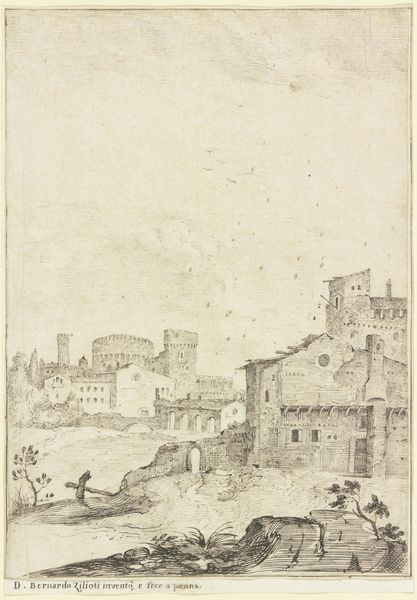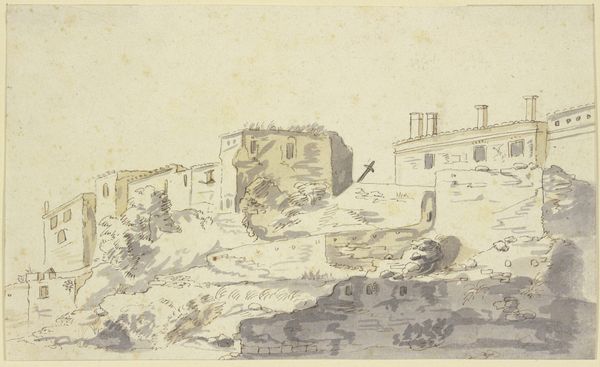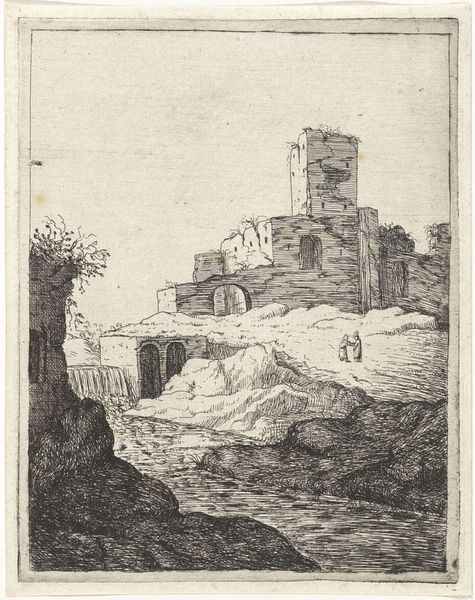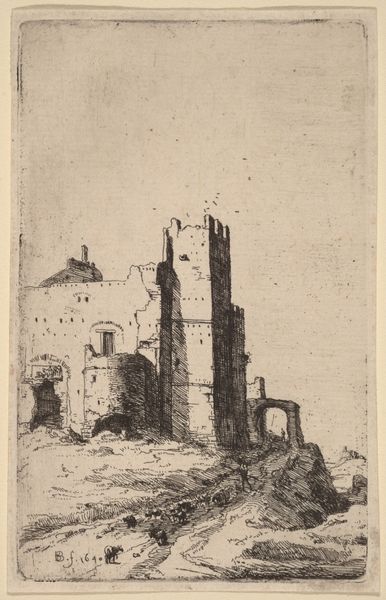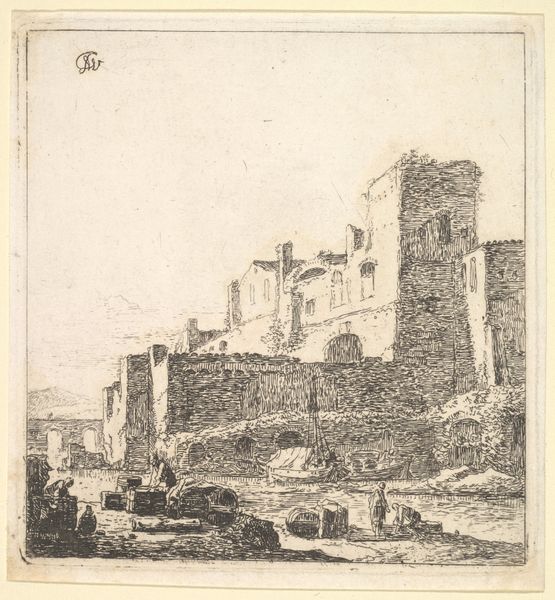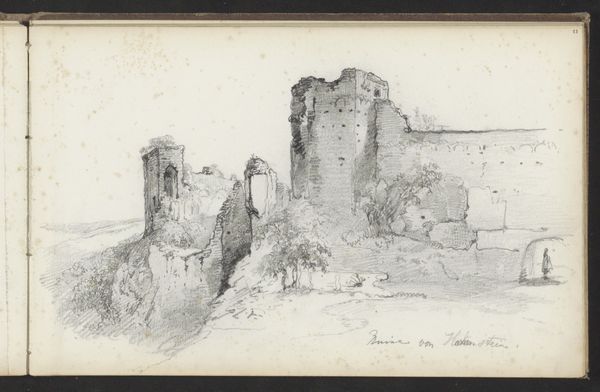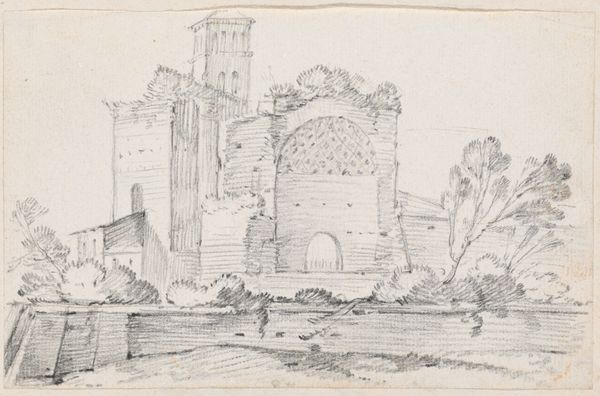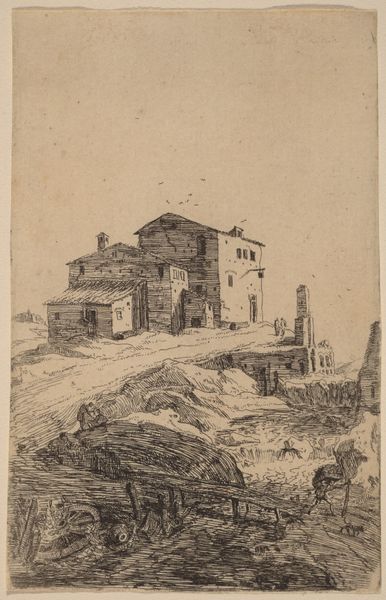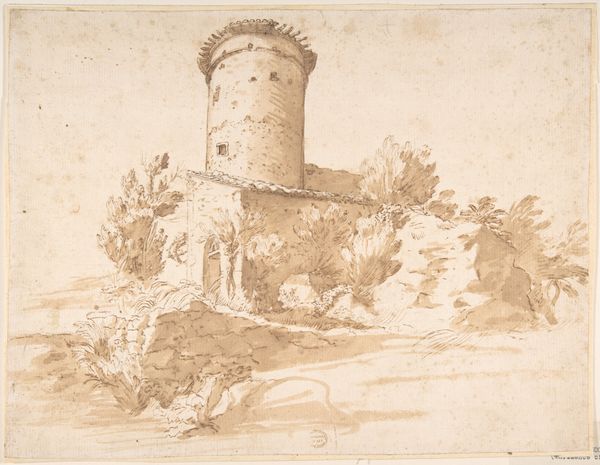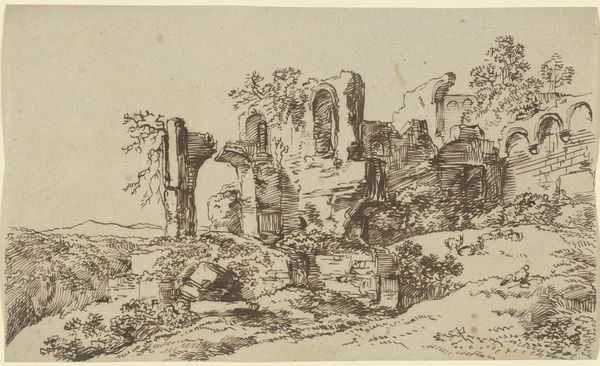
Copyright: Public Domain
Curator: Friedrich Metz created this pencil drawing titled "Near Florence" in 1851, offering us a glimpse into his travels and artistic interests of the time. It's currently held at the Städel Museum. Editor: My initial impression is that the drawing has an incredible lightness to it, a delicacy. The lines are so fine; it almost feels like a fleeting memory captured on paper. Curator: That lightness aligns with the artistic currents of the period. Consider that landscape art was gaining popularity, becoming a vehicle to express national pride and individual sensibility, even in the face of rising industrialization. Editor: Right, and it's not just a pretty picture, is it? Looking closely at the stone walls and the tower, I'm curious about the process of building these structures. The drawing subtly exposes the human labor embedded in the landscape, revealing the exploitation of materials. Curator: Precisely. While artists like Metz captured these picturesque views, they often sidestepped representing the social realities—the quarry workers, the builders. It underscores the selective vision of the time. These romantic landscape paintings could also promote the government's projects by visually embodying progress and innovation. Editor: I do find the layering of textures quite interesting, like the jagged rocks juxtaposed against the linear architecture. I see a tension there, and think it is successfully executed to contrast human intervention in nature, while demonstrating how time and decay gradually erode structures and perhaps blur the distinctions. Curator: Absolutely. The romantic era prized the sublime, this tension between order and chaos, nature and civilization. Metz navigates these dualities in a way that's both personal and reflective of larger socio-political narratives. Editor: It really speaks to the way in which materiality serves cultural narratives; pencil as an accessible and unassuming tool gives such careful renderings here. I have noticed how even in its bare form this architectural space reflects the history of labor. The very lack of people, oddly emphasizes that. Curator: Indeed. By observing that historical setting through the drawing's formal qualities, we appreciate how "Near Florence" reflects both individual vision and broader societal currents of its time. Editor: I'm struck by how, through close attention to the mundane materials and modes of artistic production, that such a deep history can be expressed and evoked.
Comments
No comments
Be the first to comment and join the conversation on the ultimate creative platform.
